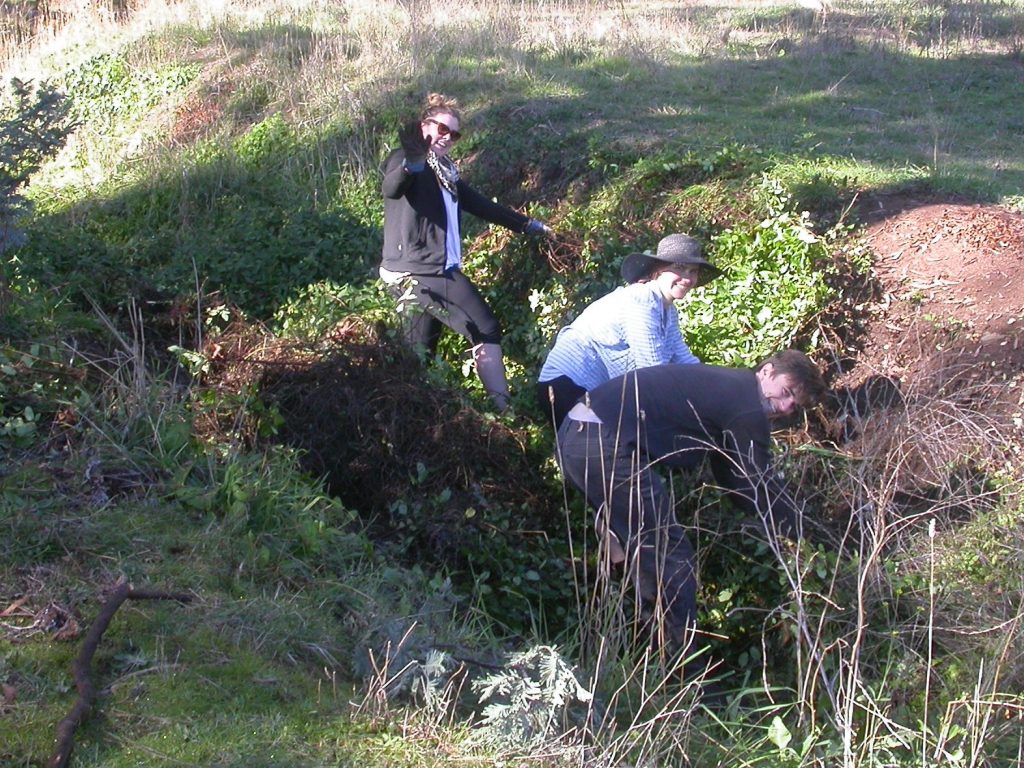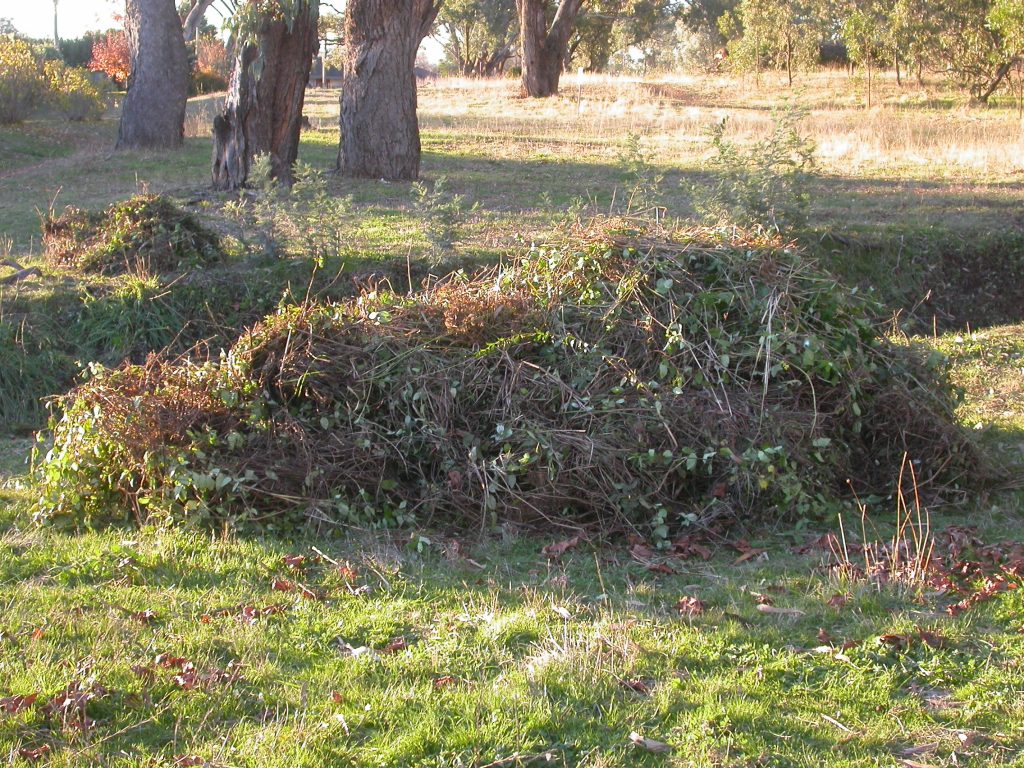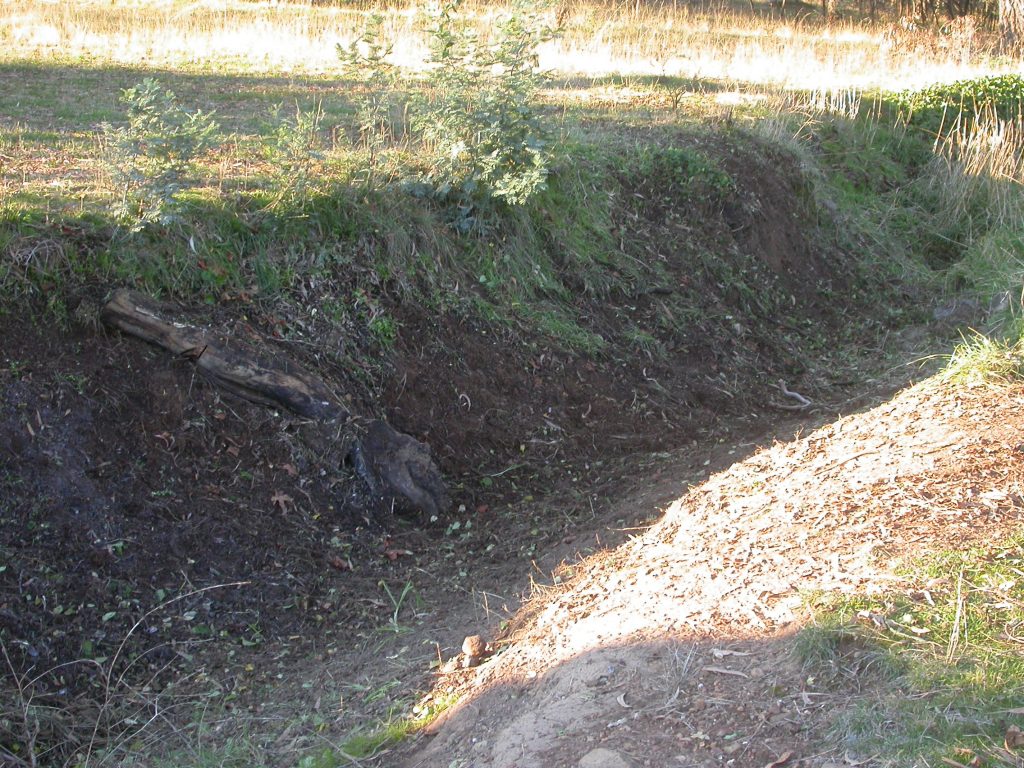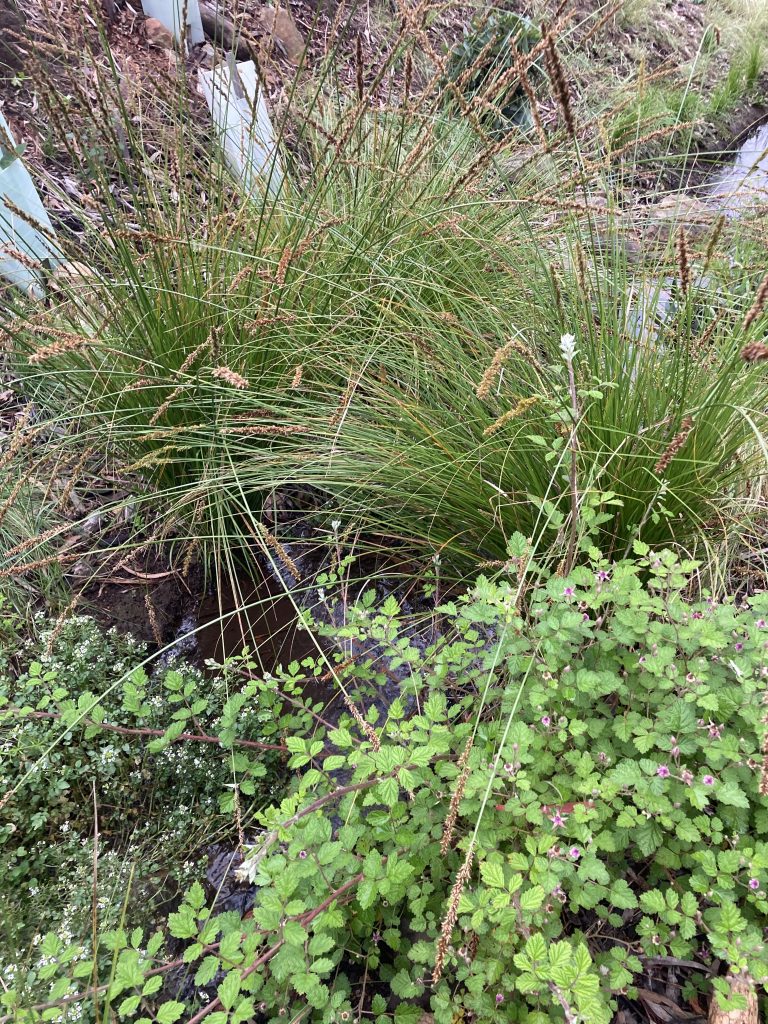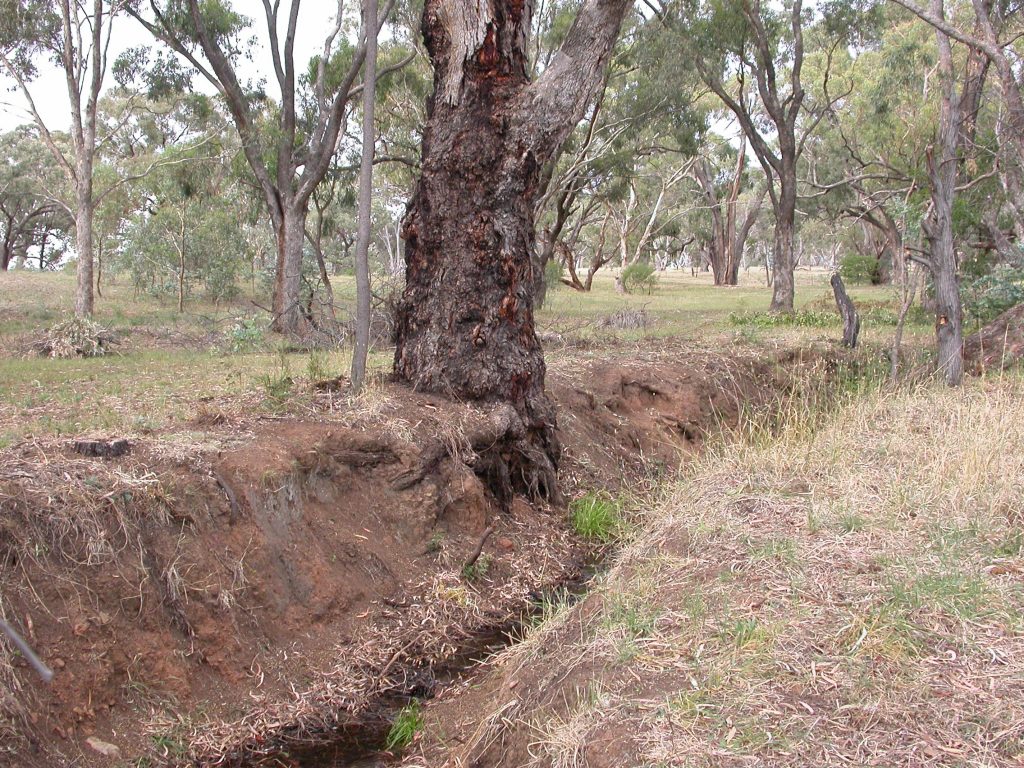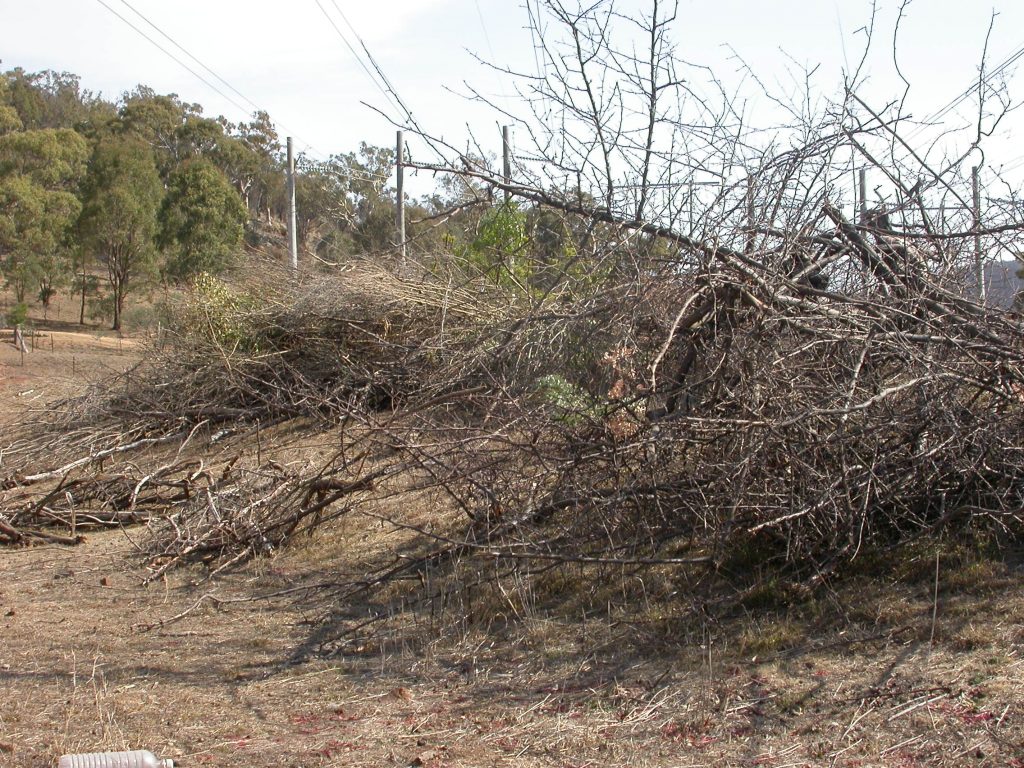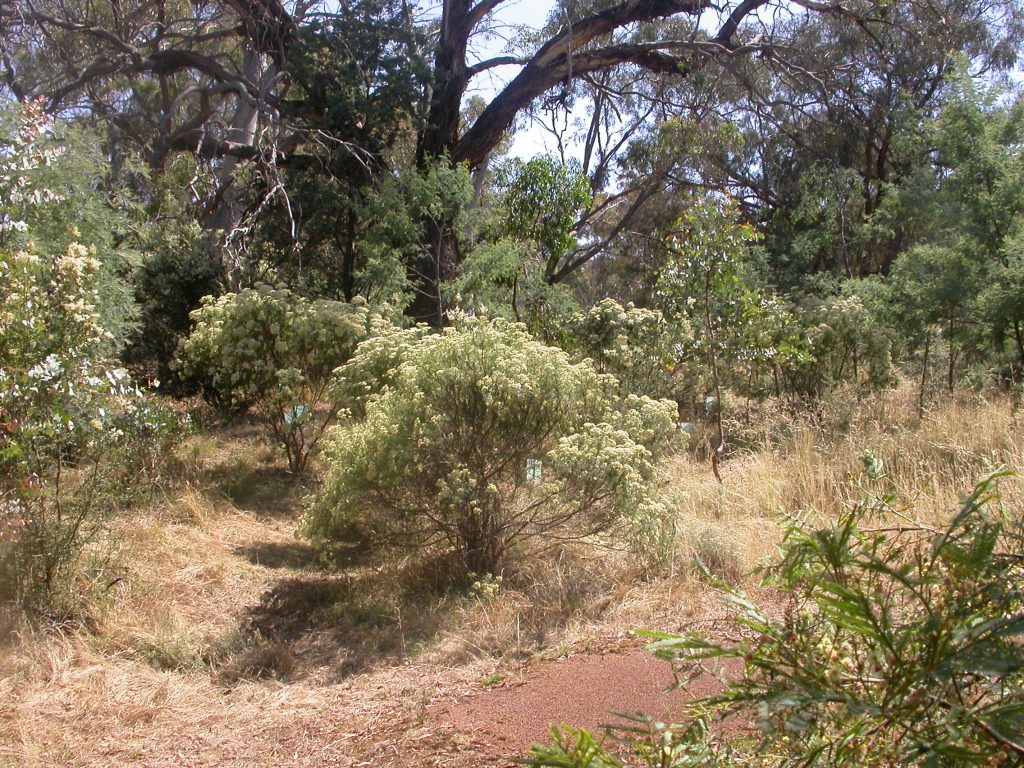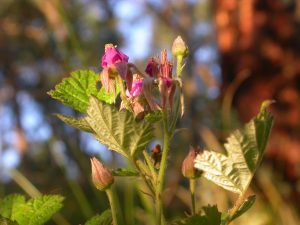
The local Native Raspberry, Rubus parvifolius is one of the star performers that volunteers planted along the drainage line; we will be adding a few more of these excellent habitat plants at the work party. The species grows naturally at the drainage line; propagation is from softwood cuttings.
Come along and give a hand at the Friends of Mt Majura working party on Sunday, 23 October, plant some local native groundcover plants and sedges and help remove some pesky weeds at the drainage line close to the Hackett water tank.
We have already removed Chilean Needle Grass and other weeds along the edge and slopes at the bottom of the drainage line; the site is now ready for planting.
There are a couple of patches with Cleavers or Sticky Weed (Galium aparine) growing along the drainage ditch and in the nearby paddock and we hope to get rid of those.
When: Sunday, 23 October 2022, 9 am to 1pm noon; give as much time as you like.
Where: Meet at the drainage line close to the water reservoir off Rivett Street and French Street intersection, Hackett; view this map.
What: Plant native ground cover plants; remove cleavers and other weeds by hand.
Bring and wear: Sun protection, long sleeves and pants, sturdy shoes or gum boots and gloves if you have them.
Inquiries: secretary@majura.org
You need no experience to attend this event; instructions, tools, disposable gloves and hand sanitiser will be provided.
Habitat for Swift Parrots

Swift parrots taking a bath in the drainage ditch (Canberra Nature Map, 2nd April 2022)
Swift parrots regularly visit the drainage line, particularly the lower part, where they would feed on the nectar of autumn flowering Bundy, Eucalyptus goniocalyx and take a bath (in which they indulge excessively preferably in groups). In 2005 and 2008 the critically endangered species visited the area in record numbers which draw large crowds of people who ventured to Mt Majura to glimpse one of Australia’s rarest parrots.
The National Swift Parrot Recovery team, in cooperation with Friends of Mt Majura undertook behavioural studies and members of the Canberra Ornithologists Group used the opportunity to get close for fantastic photographic and video footage which was used in a Swift Parrot feature film to promote work for the recovery of the species.
Daniel Iglesias, then manager of Parks and Conservation in his address to the media in 2005 referred to the large number of Swift parrots visiting Mt Majura and noted: “This really puts the Mt Majura sighting in perspective, and re-affirms how precious the ACT system of woodland reserves is to species such as the Swift Parrot.”

Bundy, Eucalyptus goniocalyx, flowers and buds (April 2005, W. Pix). Bundy flowers provide a rich nectar source to Swift parrots who migrate to mainland Australia from Tasmania after the breeding season. The tallest Bundy, the most reliable nectar producer, and the main attractor to Swift parrot grows at the drainage line.
In 2008, Belinda Cooke, Swift Parrot Recovery Mainland Coordinator wrote to FoMM after her talk: “What is special for us is that groups of Swift Parrots stayed awhile on Mt Majura in 2005 and again this year, gorging on the nectar of flowering trees and the lerps that live on the leaves. A small group of about 27 stuck around for a while around the drainage line and the Horse Paddocks* near Mt Majura feeding on the canopy of the Yellow Box. They were seen in the morning and again before dusk over the last weeks but they have moved on now”.
To learn more about Swift parrots and their visits to Mt Majura and the drainage line, click on FoMM’s 2008 Swift Parrot report or go to Swift Parrot March 2022.
* The paddocks were part of the Mt Majura nature reserve until 2003 when the ACT Government moved them into a Special Purpose Reserve, Horse Holding Paddock; it took Friends of Mt Majura 10 years to have them moved back into the nature reserve.
The Transformation
The photographs shown on this page illustrate the transformation of a weed-infested drainage line into native wildlife heaven. The photos show some of the changes and work in the lower part of the drainage line; the capital letters refer to segments of the drainage line shown on this map. This short story focuses on woody weeds and does no justice to thousands of volunteer hours to replace the herbaceous weed layer such as horehound – which is another story that you can find here. The photos are by W. Pix or as stated.

The bottom part (A) of the drainage line after volunteers removed single-stemmed woody weeds such as privets was overgrown with Japanese Honeysuckle and English Ivy (Feb 2005).
The Friends of Mt Majura began work at the drainage ditch in 2004. Metre by metre we worked our way from the upper parts of the drainage line towards the backyards of Hackett removing English Ivy, Japanese Honeysuckle, Blackberry, African Olive, Broad-leaved Privet, Chinese Privet, Firethorn, Cotoneaster and even a Willow along with numerous herbaceous weeds such as Umbrella sedge (Cyperus eragrostis), Paspalum, Broad-leaved Dock, and Cleavers (Sticky Weed).
As we removed weeds, we planted the following local species along the edge and slopes of the drain ditch: Silver Wattle (Acacia dealbata), Early Wattle (Acacia genistifolia), Hickory Wattle (Acacia implexa), Austral Indigo (Indigofera australis), False Sarsparilla (Hardenbergia violacea), Narrow-leaved Hob Bush (Dodonea viscosa subsp. angustissima), Australian Blackthorn (Bursaria spinosa subsp. lasiophylla), Rosemary Cassinia (Cassina quinquefaria), Cauliflower Bush (Cassinia longifolia), Native Raspberry (Rubus parvifolius), Long-leaved Matrush (Lomandra longifolia), Native Geranium (Geranium solanderi), and various rushes and sedges along the moist bottom.
Some parts of the drainage are still exposed to weed infestation and prone to erosion. We hope the native groundcover plants will spread and help to suppress new weed infestation, stabilize the gully slopes and provide habitat for frogs and other local wildlife.
The work along the drainage line is FoMM’s oldest continuous project. Volunteers began work half a year after the ParkCare Group was established in the spring of 2003.
People know the drainage line from walks along Casuarina Trail. It starts high up on the west face of the mountain, cascades down on the southwest slope, runs under the iron bridge that crosses the cascade along Casuarina trail, continues in a deep gully along a south-eastern slope, passes through the southern parts of the paddocks and finally hits the scraped out gully close to the lower Hackett water tank.
This map shows the location of the drainage line on the mountain. I divided the line into segments according to the work input that was and still is required: The two smallest segments A and B closest to the backyards required more than 50 times the work compared to the upper parts of the drainage line combined.
Work will be ongoing at the bottom of the drainage line as long as the residents cultivate highly invasive English Ivy, Japanese Honeysuckle and Privet in the gardens nearby or continue to spread grass clippings along the drainage line with highly invasive Chilean Needle Grass, a noxious weed that has been declared Weed of National Significance under Federal legislation.
The best input for the next decade will be to convince the local neighbours to replace their environmental weeds with bush-friendly alternatives, and not to dispose of grass clippings on the reserve.
Waltraud Pix
30 September 2022
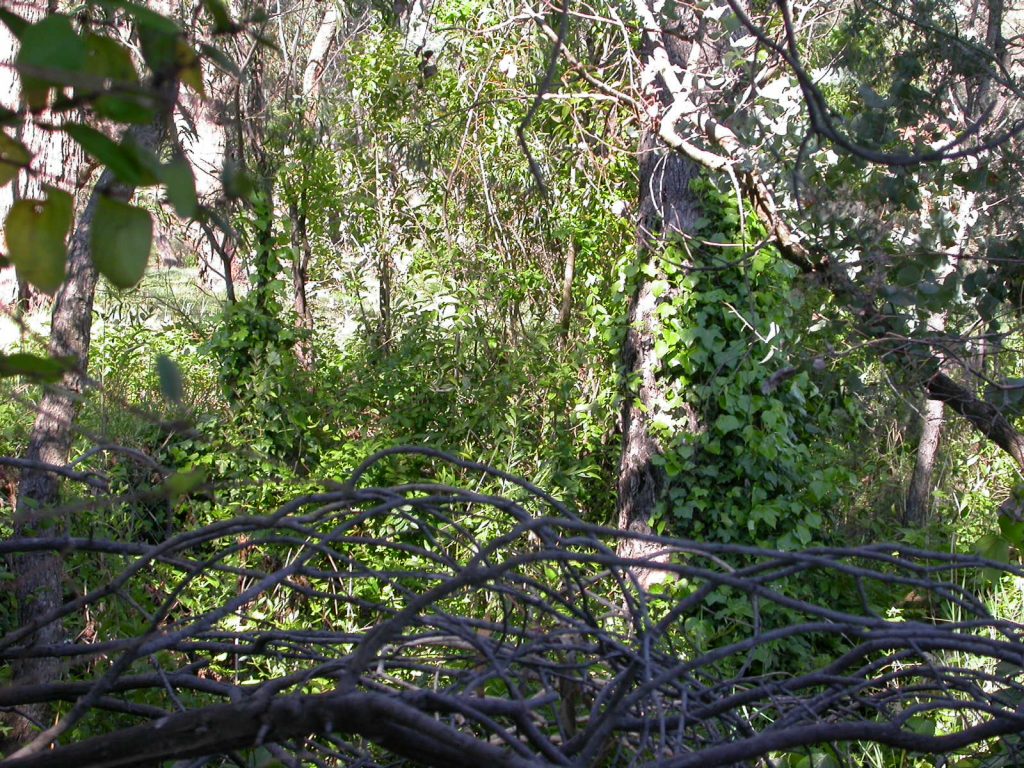
Drainage line at B in November 2004, Honeysuckle and Ivy overgrowing privet and other woody weeds inside the ditch…
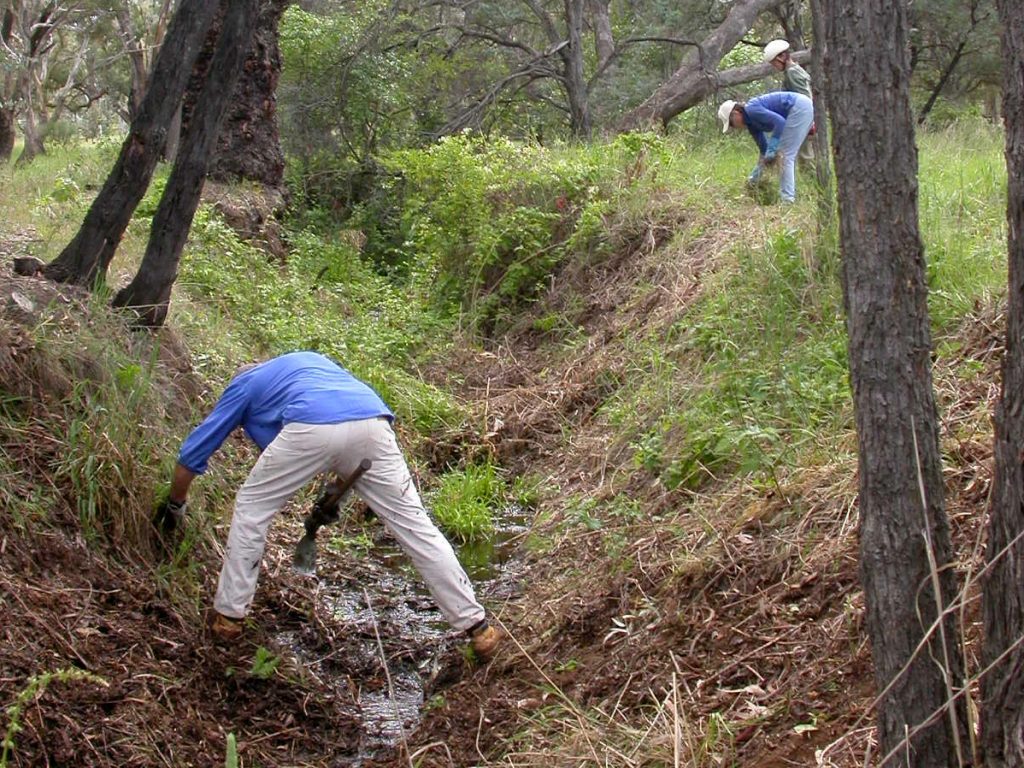
…and the first working party to remove weeds at the bottom of the ditch in November 2004 (J. Zeil) …
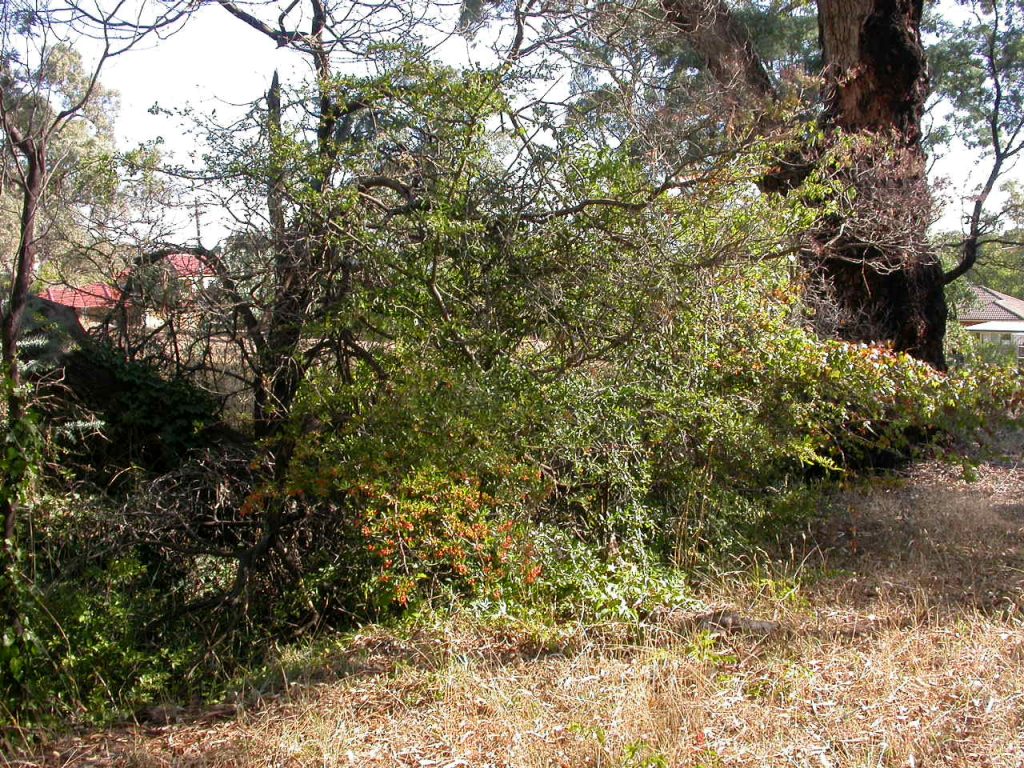
… followed by subsequent work parties to remove large firethorns that dominated the edges (March 2004)…

… and carried out the first test planting of a small number of Silverwattles in spring 2005 followed by mass plantings of native shrubs and ground-covering plants in April 2008.
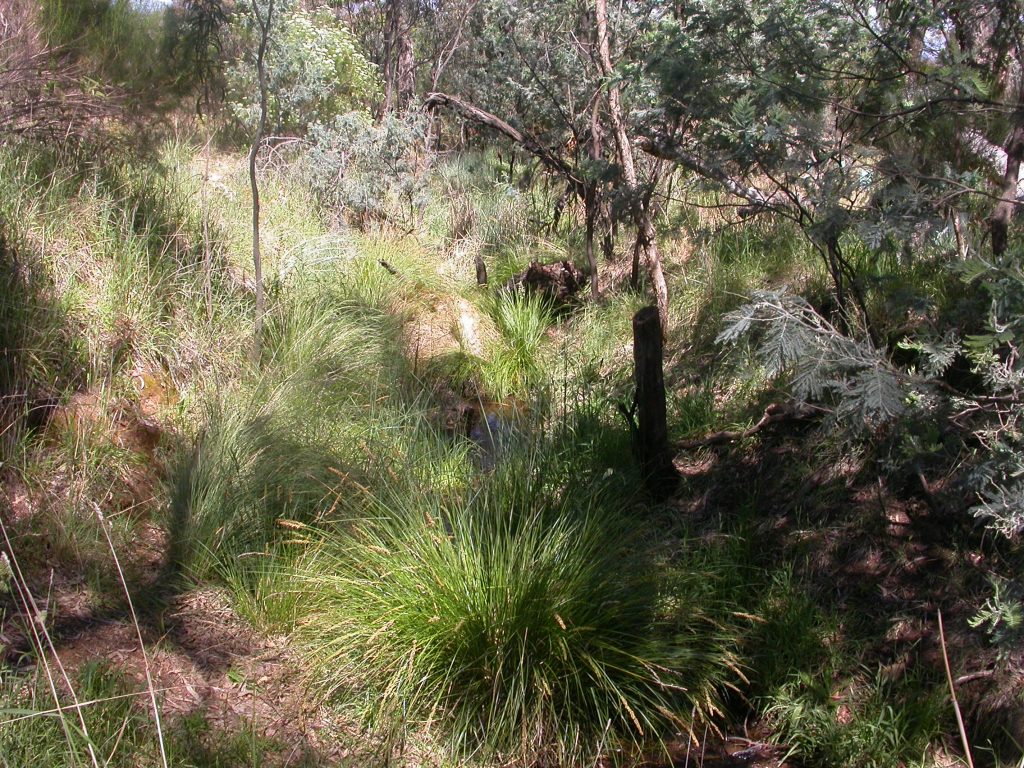
The top part of B was in a vastly improved condition in November 2013, nine years after the first weed removal slog.

In 2006 volunteers tackled the vast amount of woody weeds along the drain line that runs through the paddocks at D and E. The most frequently encountered species were African Olive, Cotoneaster, Firethorn and the two species of privets shown happily flowering at E in 2004…
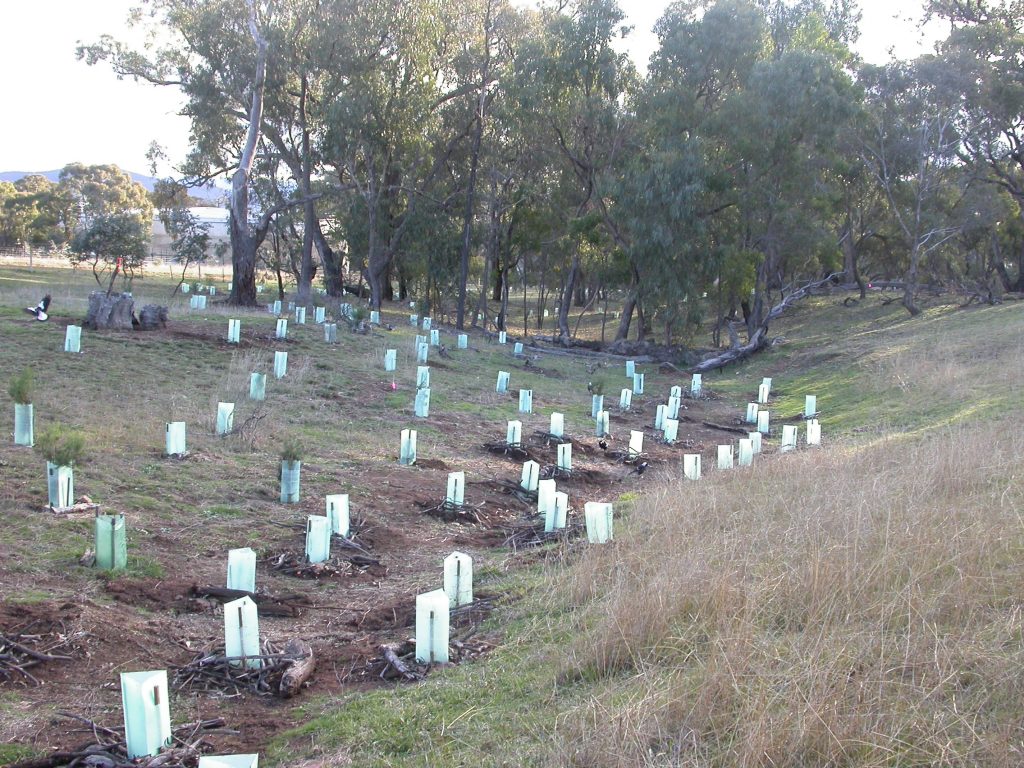
… to be replaced by local native shrubs and ground-cover plants on a one-to-one basis during the National Tree Day community mass planting events; the photograph shows plantings at the upper part of the E-segment in 2010 …
the
The

